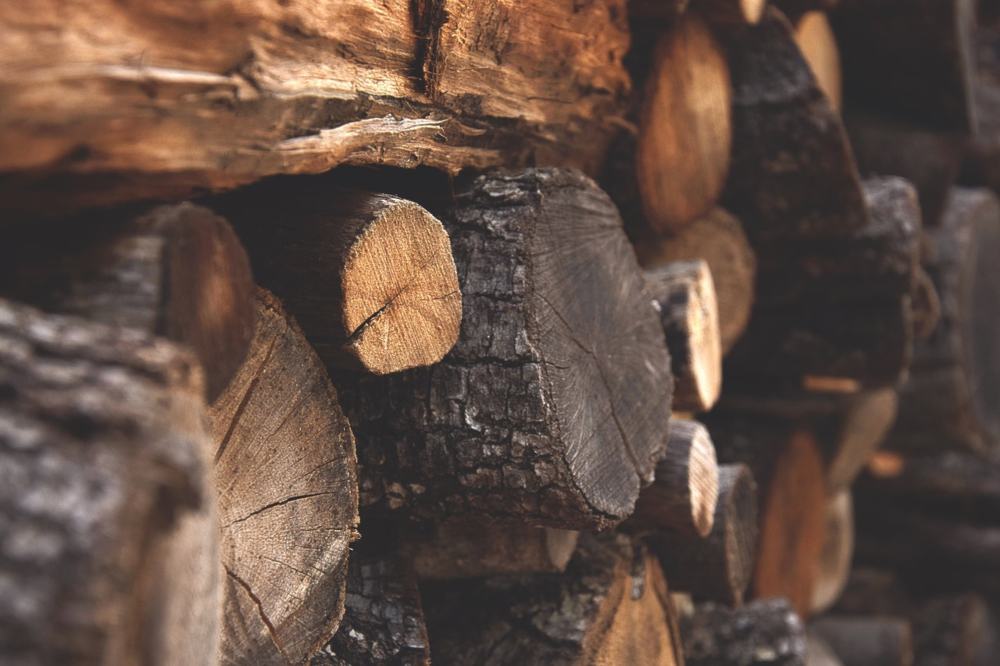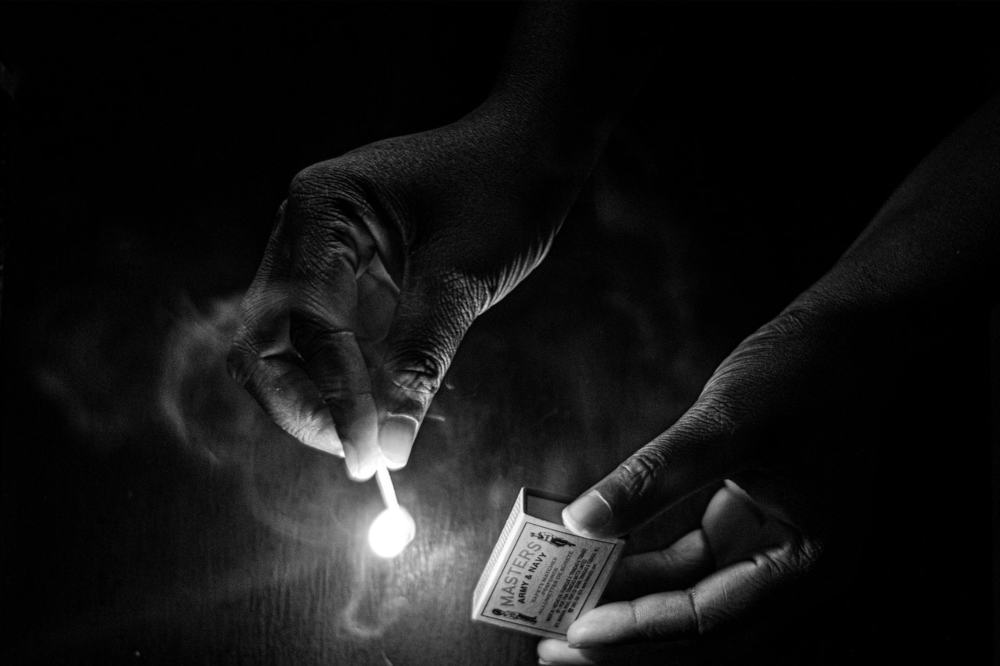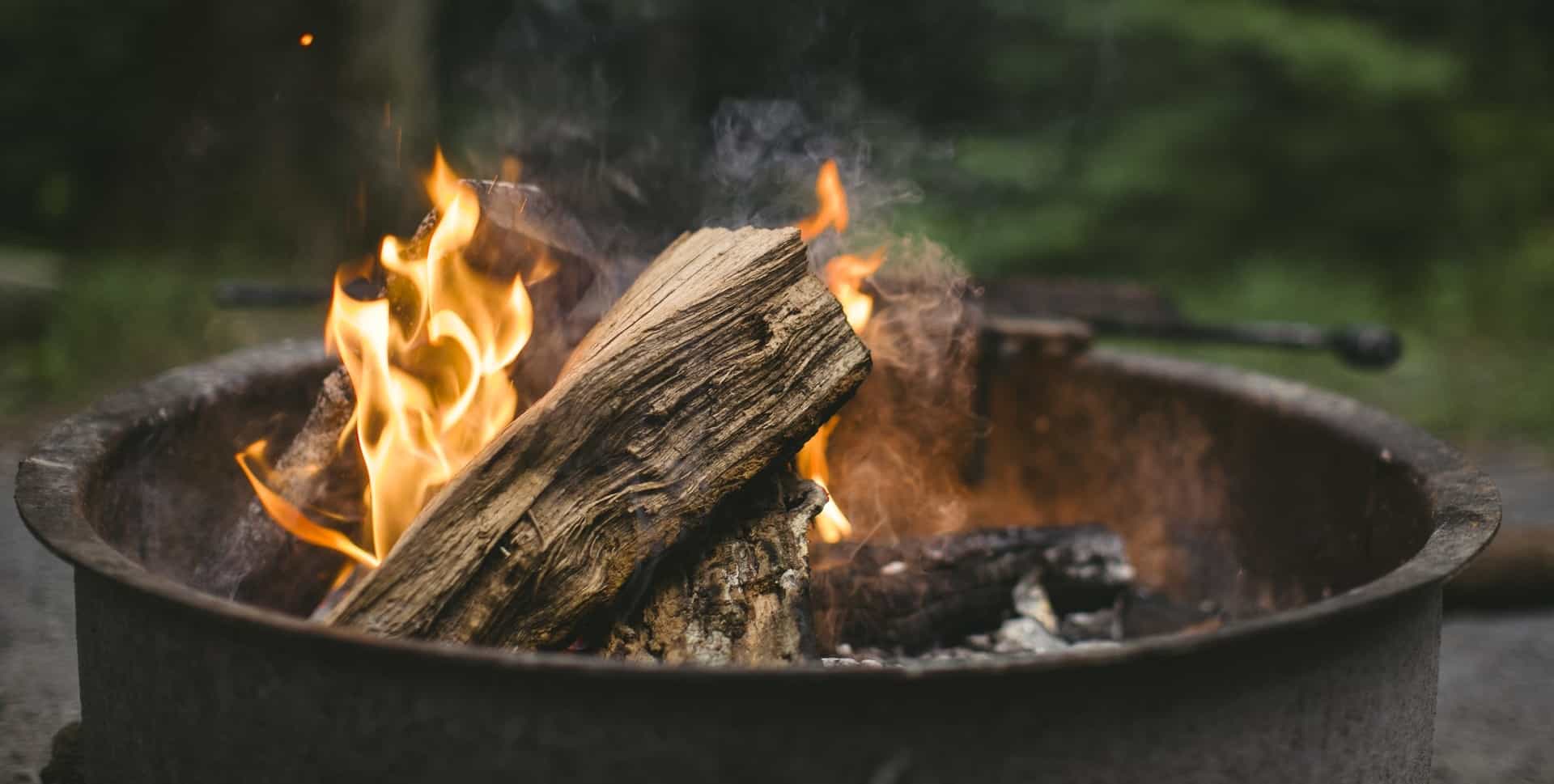Whether you’re out camping or sitting in the backyard on a cool summer night, nothing beats a roaring fire.
However, if you’re unsure how to start a fire, you may struggle to get the flames going. Fortunately, starting a fire is pretty straightforward, both as a camp fire or in a fire pit. As long as you have the right fuel and tools handy, you can get a roaring blaze going in no time.
So, with that in mind, let’s look at how to start a fire in a fire pit. We’ll primarily discuss wood fires, but if you have a propane or gas fire pit, we’ll also go over the proper steps for that.
1. Collect Your Fuel
Since wood fires are the most common option for a fire pit, these steps will discuss how to ignite them. Also, fires that use alternative fuel sources like a propane or natural gas fire are much easier to light. If you’ve never started a wood fire before, it can be kind of tricky.
The first step is to understand your firewood and how it burns. Some woods are perfect for long-lasting fires, while others burn quickly and provide a lot of heat. Depending on where you live, you might not have that many choices for firewood. However, knowing the difference between each option allows you to make an informed decision before using your fire pit.

Hardwood vs. Softwood
When looking at different types of wood, you’ll come across hard and softwood varieties. Hardwood trees include ash, oak, elm, and maple. These trees take longer to mature, and they have a thicker density. So, burning hardwoods means your fire will take a bit longer to ignite, but it will also burn for a long time. Hardwoods can also provide aromatic smoke, such as hickory or maple. While you may not be using your fire pit for meat smoking, you can at least enjoy the scent as you warm yourself next to the flame.
Softwoods grow faster than hardwoods, so they have more air and less density. As a result, softwoods are easier to ignite, but they won’t burn for as long. Examples of softwoods include cedar, fir, pine and spruce. These woods will also give you that satisfying popping sound as the air inside ignites.
Realistically, for the best fire, you should use a combination of hardwood and softwood. You should use softwood for your kindling and help ignite your hardwoods. Once your fire is steady, you can add hardwood logs that will burn for hours.
Gas Fire Pit
Typically, a built-in fire pit on your patio or in your backyard will likely use an alternative fuel source. For example, you may have a propane tank that feeds into the pit so you can ignite and adjust the flame level according to your needs.
Most gas fire pits are enclosed with either a retaining wall or a brick enclosure. When making a stone or brick fire, you must remember that the masonry can stay pretty hot after the fire burns out. Bricks and other stones absorb the heat and lose it slowly. So, even if you put the fire out several hours ago, the stones may still have some residual heat. Overall, be extra careful when working with a stone fire pit, so you don’t accidentally burn yourself.
Another element to point out is that you need to know how to check your fuel source. For example, most propane tanks don’t tell you how much is left. However, you can get a pretty good idea by knocking on the tank or lifting it to see how heavy it is (if possible). Knowing your fuel level ensures you don’t run out while trying to enjoy your fire pit.
Finally, propane and natural gas can expire if left in outdoor containers. Ideally, you should bring the tank inside if you’re not planning on using the pit for a while.

2. Light Your Tinder
Any DIY fire requires three types of fuel: tinder, kindling, and firewood. Tinder is usually comprised of small strips of wood. The idea is to have tiny, extra-dry pieces that will ignite quickly and easily. However, tinder doesn’t stay lit for very long, so you need to have your kindling and firewood ready to go immediately after lighting it.
You can use a match or a lighter to get your tinder going. While you could try to flex your skills and use sticks or a flint, there’s no reason to add unnecessary work.
3. Add Kindling
Kindling is larger than tinder but not as large as firewood. Typically, you can use sticks or twigs as kindling. Similarly, you can cut firewood into smaller pieces that will light quickly and stay lit for a little while.
The best kindling won’t burn out too fast because it’s meant to help the bigger pieces ignite. If you have regular firewood or logs for your fire, you need stable flames to get them to burn. Otherwise, it will take too long for these pieces to light, and you’ll have to start the whole process again.
When adding kindling, start small and build your fire slowly. Let the initial pieces catch fire before adding more. If you put too much kindling on at once, you can snuff the fire before it has a chance to breathe.
4. Add Firewood
As we mentioned, softwood burns quicker and doesn’t last very long, while hardwood burns for a long time. If possible, burn a few pieces of softwood first and then add some hardwood to the pit. This way, you don’t have to stoke the fire or add more fuel as often.
You should also pay attention to your firewood and inspect it for pests, rot, and sap. If insects have burrowed into the wood, they may scatter once the piece is on fire. Rotten wood will also burn very quickly and could release off-putting smells. Sap inside of wood will generate a lot of smoke and create a burnt, acrid smell around the fire pit.
Overall, don’t assume that you can just burn any kind of wood you find.
5. Keep the Fire Going
The best way to keep a fire pit going is to stay on top of adding more wood to it. Keep in mind that hot coals can also ignite firewood pretty easily, so don’t assume that you need a flame.
Fires also need air and heat to stay lit, so ensure that air can get to the bottom of the fire. Most professional fire pits will have small holes at the bottom to allow for airflow. If you don’t, you might need to blow on the flames or fan them whenever you add more wood to the mix.
Tips and Tricks About How to Start a Fire in a Fire Pit
If you’ve never built a fire from scratch, you might struggle a bit at first. Here are some pro tips to ensure your first outing goes as smoothly as possible:
- Have Your Tools and Fuel Ready – Don’t scramble to find firewood or fuel after you’ve started. Instead, keep everything nearby, including matches and lighter fluid if necessary.
- Don’t Overcomplicate Things – While you can build a teepee-style fire out of kindling, there’s no need to make your wood look aesthetic. After all, it will burn anyway, so why waste time and energy? Also, feel free to use a lighter or something reliable to start your flame. You don’t need to show off by using old-fashioned methods like a flint.
- Add Air – If your flame isn’t igniting well at first, you can simply blow on it to help it grow. When adding air to the fire, start slowly and build. If you blow too hard, you can snuff the flame before it has a chance to grow.
- Use Enough Kindling – In many cases, a fire goes out because it doesn’t have enough fuel. Use more kindling than you think you need, just in case. Remember, these pieces must burn long enough to get your firewood to ignite.
FAQs About How to Start a Fire in a Fire Pit
Before starting your fire, it’s helpful to know as much as possible about building a DIY fire. Here are some answers to frequently asked questions about this topic.
How Can You Start a Fire in a Fire Pit Without Kindling?
You need some type of fuel to help your firewood ignite. So, if you don’t have proper kindling, we recommend splitting your firewood into smaller pieces. If that doesn’t work or isn’t possible, we recommend using an accelerant like lighter fluid. However, be sure to let the fluid soak into the wood, so it doesn’t burn off immediately.
How Can You Start a Fire in a Fire Pit With Charcoal?
Charcoal can work well for starting a fire if you want it to have even heat that lasts a long time. Since it takes charcoal a while to heat up, we recommend using lighter fluid or hardwood kindling. Then, once the coals start glowing, you can add firewood and keep the flames going.
How Can You Start a Fire in a Fire Pit With Lighter Fluid?
The best option is to spray your wood with lighter fluid and let it soak into the fibers. You’ll have to use more fluid than you think because it evaporates quickly. Also, use the soaked wood immediately before the lighter fluid evaporates, and you have to start all over again.
How Can You Start a Fire in a Fire Pit With a Fire Starter?
A fire starter makes it easy to ignite your tinder and kindling. Basically, you will use this item instead of a match or a lighter. The steps are still the same.
How Can You Light a Fire Pit Without Smoke?
Some fire pits help remove smoke before it billows out. They do this by igniting the smoke at the surface of the pit. You need a specialized fire pit to have a smokeless fire. Otherwise, it’s virtually impossible to prevent smoke if you’re burning wood. However, if you’re using a gas fire pit, smoke won’t be an issue.
Finished with your fire pit?
Don’t forget to extinguish it! Find out how to put out a fire pit.
